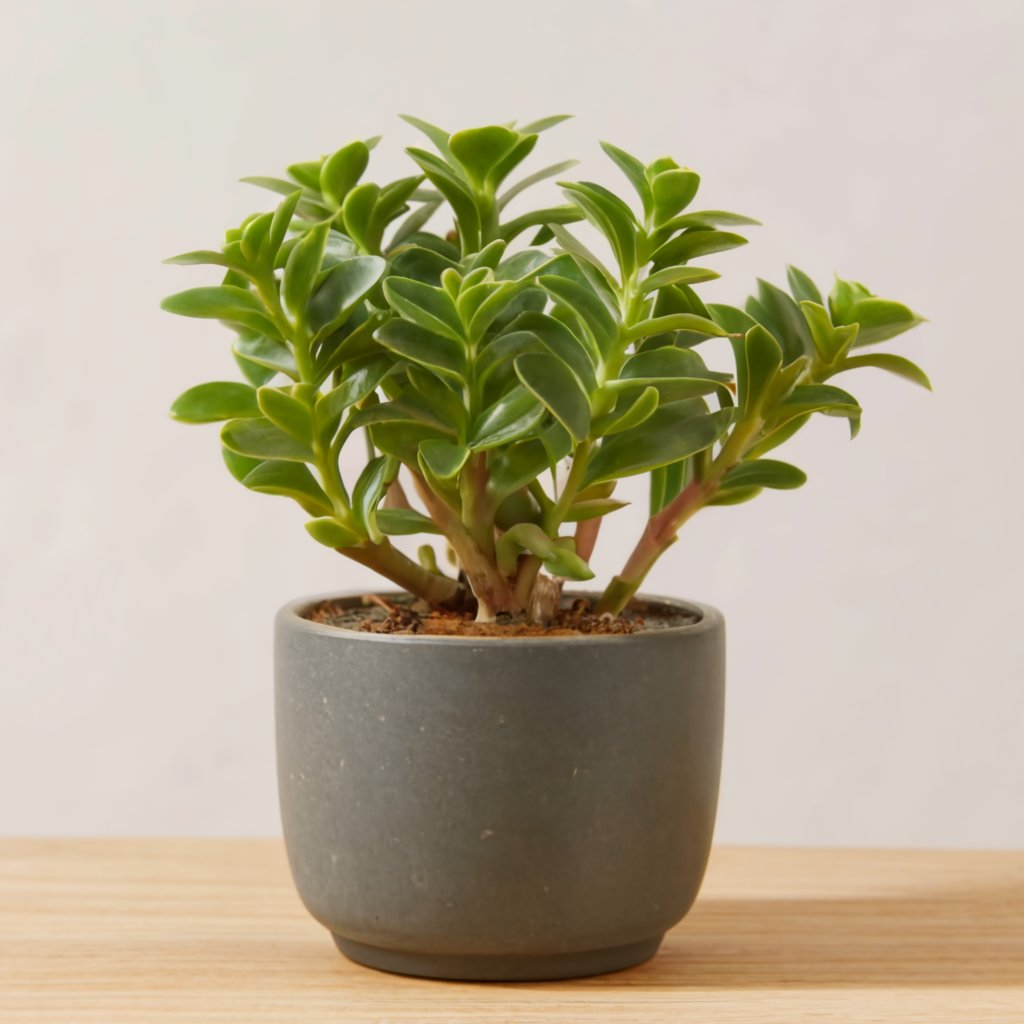
The jade plant, with its plump, emerald leaves and air of resilience, is a popular choice for both novice and seasoned plant enthusiasts. But beneath its unassuming exterior lies a surprising amount of personality. With proper care, this succulent can transform into a stunning indoor centerpiece or a vibrant addition to your outdoor space.
However, even the most low-maintenance plants have their quirks. To unlock the full potential of your jade plant, here are 7 easy hacks that will keep it thriving indoors and outdoors:
This post may have affiliate links. This means that sometimes when you click a link on our site and make a purchase on Amazon, we may earn a small commission at no additional cost to you. We only recommend products we truly believe in, and your support helps keep us running!
7 Easy Hacks for Growing Jade Plants Indoor And Outdoor

1: Light Up Their Lives
Jades, like little sun worshippers, crave bright, indirect sunlight. An east-facing window is ideal, offering a gentle morning dose of light without the harsh afternoon rays that can scorch the leaves. South-facing windows might work if filtered through a sheer curtain. West-facing ones are a gamble – too much afternoon sun can stress the plant. North-facing windows, unfortunately, won’t provide enough light for healthy growth.
2: Watering Wisdom – Less is More
One of the biggest downfalls for indoor jade plants is overwatering. Remember, these guys hail from desert environments and have adapted to store water in their fleshy leaves. Overwatering leads to root rot, a silent killer that manifests as mushy stems and leaves that drop prematurely.
Here’s a simple trick: stick your finger about an inch into the soil. If it feels dry, it’s watering time. If it feels even slightly moist, hold off! During the colder months, you might water your jade plant as infrequently as once a month.
3: Potting for Success
The right pot is crucial for happy roots. Jades prefer pots with drainage holes to prevent waterlogging. Opt for a pot that’s only slightly larger than the root ball – too much space can encourage excessive water retention.
4: Drainage Matters
Speaking of drainage, ensure your potting mix allows for good drainage. Look for a succulent or cacti mix, which is designed to drain quickly and prevent root rot. If you’re feeling adventurous, you can even create your own mix by combining regular potting soil with perlite or coarse sand for added drainage.
5: Fertilizing – A Gentle Touch
Jade plants are not heavy feeders. During the active growing season (spring and summer), a diluted dose of succulent fertilizer applied once a month is sufficient. In the winter, hold off on fertilizing altogether, as the plant goes into a semi-dormant state.
Growing Jade Plant Outdoor
6: Soak Up the Sunshine
Jades thrive outdoors in warm climates with plenty of sunshine. A spot that receives at least 4-6 hours of direct sunlight per day is ideal. However, be mindful of the scorching afternoon sun, especially in very hot regions. If the leaves start to turn reddish-brown or appear wilted, provide some afternoon shade.
7: Embrace the Elements (But Not Too Much)
Jades can tolerate occasional rain showers, but prolonged periods of wetness can lead to root rot. If you live in a rainy climate, ensure your jade is planted in a well-draining area and consider bringing it indoors during heavy downpours.
8: Winter Worries
While jades are fairly cold-tolerant, they can’t withstand freezing temperatures. If you live in a region with harsh winters, it’s best to bring your jade plant indoors before the first frost. Alternatively, you can provide some winter protection by wrapping the pot with burlap or placing it in a sheltered location.
Bonus Hacks for Happy Jades
9: Embrace the Snip
Jade plants readily respond to pruning. Regular pruning encourages bushier growth and helps maintain a desired shape. Don’t be afraid to snip off leggy stems or remove any dead or diseased leaves. You can even use the cuttings to propagate new jade plants!
10: Rotate for Balanced Growth
Jade plants naturally lean towards the light source. To ensure even growth, rotate your plant every few weeks. This will encourage all sides of the plant to receive sufficient light and prevent it from becoming lopsided.
11: Repotting Rhythms
As your jade plant matures, it will eventually outgrow its pot. Signs of needing a repot include roots protruding from the drainage holes or the plant becoming top-heavy. Repot your jade plant into a slightly larger pot using fresh, well-draining potting mix.
